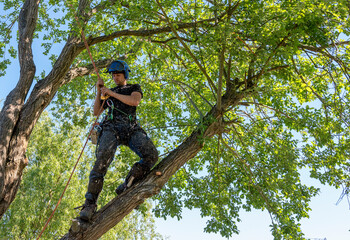Septic Tank Cleaning Perth is an important part of keeping your household waste management system running smoothly. But many homeowners wait until something goes wrong – like slow drains and foul odors – to schedule maintenance.

Ideally, you should schedule cleaning services at least every three years. This service includes breaking down and removing solid waste accumulating inside the tank, as well as treating surfaces, flushing lines and inspecting distribution boxes.
Septic tanks are watertight underground containers that hold wastewater long enough to allow solids to separate and partially decompose. Fats, oils and grease float to the top to form a layer called scum, while other waste sinks to the bottom to form a thick sludge. Aerobic bacteria in the tank work to decompose as much of these solids as possible before the liquid effluent enters the drain field for further treatment. When excess sludge builds up in the tank, it can cause clogs and raw sewage back-ups inside homes. It also can contaminate the soil with heavy metals and organic pollutants, harming groundwater and ecosystems.
Proper septic system management can help homeowners avoid the problems caused by excessive sludge buildup. Regular septic tank treatments, careful waste disposal, and efficient water use are all key practices that can help reduce sludge and prevent it from building up too quickly in the tank. Preventing septic system issues that lead to sludge buildup can save homeowners money, extend tank life, and improve environmental protection.
A septic tank treatment can include a bacterial additive that gives the tanks a healthy dose of aerobic bacteria to break down solid wastes and keep sludge levels from rising too fast between cleanings. This helps the tank stay at or below the recommended sludge level and avoid costly repair and system failures.
Another way to reduce sludge buildup is to have the septic tank pumped more often. A septic tank service can include a technician that measures the sludge depth in the tank using a special tool and recommends a pumping schedule. The technician can also check the drain field for signs of overflow or clogs and recommend repairs as needed.
A septic tank cleaning is an ideal time to inspect the septic system for any signs of damage or wear. A technician can look for signs of cracks, corrosion or leaks in the tank, and can repair these issues to extend the lifespan of the septic system. In addition, the septic tank cleaner can clean the septic tank filters to remove lint, coffee grounds and other items that can block the flow of wastewater and cause backups.
Odor
A foul odor around your septic tank can signify that it is full or there are problems with the system. The smell of sewage odor can also be caused by main sewer line leakage, clogged drains in your home, or a utility hole lid that doesn’t fit properly. The odors can be very unpleasant and may even cause health issues.
The odor can be caused by high concentrations of bacteria, methane gas, and hydrogen sulfide gases. These are toxins that are harmful to the environment and can be dangerous if they come into contact with your skin or breathed in.
There are several things you can do to prevent septic tank odor, including regularly cleaning your drains and using a septic system additive. You should also pump your septic tank when recommended, and inspect the septic tank, the drain field, and the vent on a regular basis.
Another way to prevent septic tank odor is to only use non-toxic products in your home, such as septic safe toilet paper and soap. You should also avoid flushing anything other than sewage and human waste, such as cigarette butts, coffee grounds, oil, cleaning products, paints, and chemicals.
Foul septic tank odors should never be ignored, as they can indicate a variety of serious problems that could affect your home and health. It is important to address these problems right away.
The first step in preventing septic tank odor is to have your tank pumped on a regular basis. This will remove accumulated solids and reduce the risk of odor-producing gases escaping.
Other steps you can take to help prevent septic tank odor include keeping your drains clean, running water frequently, and removing the lid from the septic tank once per year. You should also have a professional inspect your septic tank, drain field, and vents on a regular basis to make sure they are free of blockages and working properly.
In addition, you can try a septic tank odor control product such as BIOLATRIN(r), which requires only a monthly application and can be purchased at most hardware stores. It comes with a measuring scoop for easy dosing and helps to maintain proper septic tank pH levels, which is essential in reducing odor. However, you should be careful about septic tank additives as there is little independent research that verifies their effectiveness and they can disturb the natural activity within your septic tank.
Overflow
Most of us don’t think twice about the septic system in our home, since it’s underground and out of sight. However, it’s important to be mindful of what you flush down your drains. Certain materials can disrupt the helpful microorganisms that break down solid waste in your septic tank. This can cause the tank to overflow, leading to sewage backups and other problems.
If you notice wastewater pooling around your septic system, it’s time to call for a cleaning. This may be an indication that the septic tank is full and unable to handle more wastewater, or that it’s clogged. It could also indicate that there’s a problem with the drain field lines.
Regular septic tank pumping helps eliminate solid waste and keeps your system running at peak performance. In addition, routine septic tank cleaning reduces the risk of premature septic system failure.
If your septic tank has overflowed, it’s important to stay away from the area. The smelly sewage water may contain bacteria that are harmful to human health. You should also avoid using any water-dependent appliances until the issue is resolved.
Septic tanks and drain fields are designed to handle a specific volume of water over time. Excessive water usage can overwhelm these systems and lead to a variety of issues, including drainfield overload and clogged toilets and showers. You can avoid these problems by spreading out water usage throughout the day, fixing leaks, and using water-efficient fixtures.
Leaky faucets, drains and toilets may not seem like a big deal, but they can add up to hundreds or even thousands of gallons of water wasted annually. This translates to a lot of money spent on utility bills and potential damage to your septic system.
Many septic tank overflows are caused by non-biodegradable waste materials. These can include things like wipes, feminine hygiene products and chemicals. It’s important to avoid flushing these items, which can create blockages and other problems in your septic system. Also, it’s important to fix any leaking faucets and toilets before they cause costly damage.
Groundwater Pollution
Biological action within a septic tank removes most of the solids (sludge) and some of the liquid waste (scum). The partially treated wastewater moves through the drainfield in your yard, where it is absorbed into groundwater. During this process, the bacteria in the effluent break down organic waste and produce methane. This is a natural greenhouse gas that contributes to climate change and may cause other problems, such as soil pollution or contamination of drinking water.
If a septic system is not properly designed, installed, used or maintained, it can pollute local drinking water wells, surface waters and groundwater sources. This can result in diseases and other health risks for humans, livestock and wildlife. For example, untreated domestic wastewater can contain disease-causing pathogens that can cause diarrheal illnesses such as dysentery and hepatitis. In addition, contaminated water can contaminate shellfish beds and swimming beaches.
Groundwater pollution caused by septic tanks can also interfere with the natural environment, including nearby waterways and lakes. The nitrates and phosphorus from septic tank effluent can lead to excessive nitrogen and phosphorus levels in sensitive surface water bodies, and the algal growth may reduce dissolved oxygen levels, making these areas unsuitable for shellfish and other aquatic species.
The use of improper toilet paper, soaps, detergents, disinfectants and other household chemicals can have an impact on a septic tank and the wastewater system. These substances can disrupt the bacterial processes in a septic tank, destroy aerobic and anaerobic bacteria and increase methane emissions. They can also clog the drain field and septic lines, contributing to overflow and sewage back-up into the house.
The best way to minimize these problems is by using only eco-friendly products and conducting routine septic tank cleaning. Avoiding the use of garbage disposals and other drains besides your septic tank can help prevent problems. A septic tank cleaning company can help you develop a good maintenance routine that protects the environment and keeps your home healthy and safe. Contact us to schedule a time for your septic tank inspection and cleaning.








